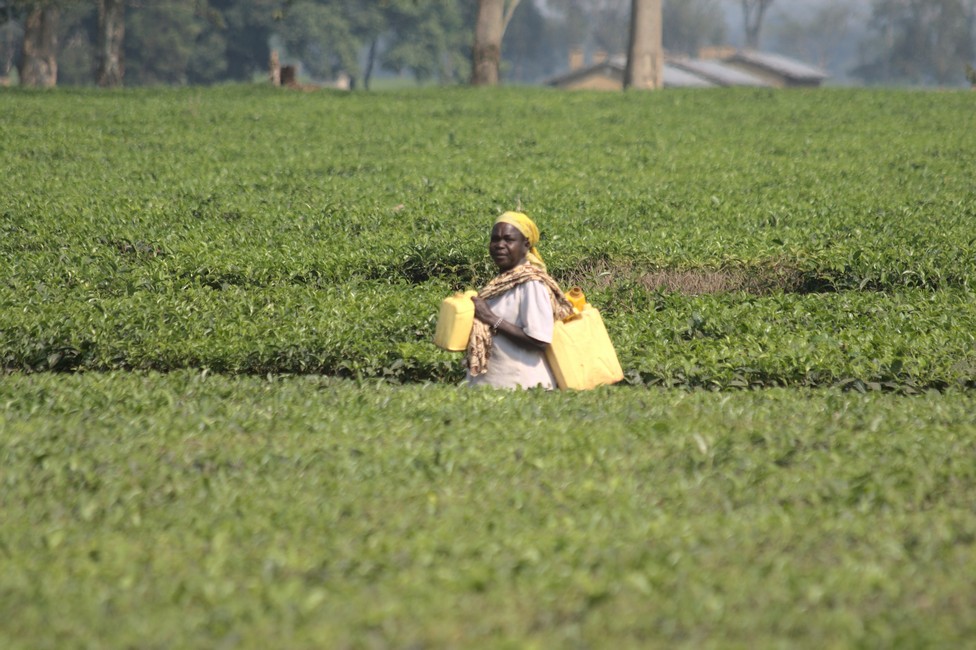Tea Growing in Uganda: A Steeped History and Blooming Industry
Uganda, often referred to as the “Pearl of Africa,” is not only known for its stunning landscapes and diverse wildlife but also for its flourishing tea industry. The cultivation of tea in Uganda has a rich history, and it plays a significant role in the country’s economy and agricultural sector.

1. Introduction to Tea in Uganda
1.1 Historical Roots
Tea cultivation in Uganda has a history dating back to the early 20th century when British colonists introduced tea plants to the country. The favorable climate and high-altitude regions made Uganda an ideal location for growing tea. Over the decades, tea farming has evolved into a major agricultural industry and a key export for the nation.
1.2 Geography and Climate
Uganda’s varied geography and climate provide suitable conditions for tea cultivation. The country’s tea estates are primarily located in highland areas, where the climate is cooler and rainfall is well-distributed throughout the year. Regions such as Fort Portal, Kanungu, and Bushenyi are known for their tea plantations.
2. The Tea Plant and Varieties
2.1 The Tea Plant (Camellia sinensis)
Tea is derived from the leaves of the Camellia sinensis plant. There are several varieties of the tea plant, including Camellia sinensis var. sinensis and Camellia sinensis var. assamica, each with its unique characteristics and flavors. The choice of tea plant variety can influence the type and flavor of the tea produced.
2.2 Varieties of Ugandan Tea
Uganda primarily cultivates two main types of tea:
- Black Tea: The majority of tea produced in Uganda is black tea. It is fully oxidized and has a robust, bold flavor.
- Green Tea: Green tea is less common in Uganda but is gaining popularity due to its perceived health benefits. It is minimally oxidized, resulting in a lighter, fresher taste.
3. Tea Growing Regions in Uganda
3.1 Western Uganda
Western Uganda, particularly the districts of Fort Portal, Kanungu, and Bushenyi, is a major hub for tea cultivation. The region’s high-altitude and ample rainfall make it an ideal location for tea plantations. The landscape is adorned with lush green tea fields that stretch across the rolling hills.
3.2 Eastern Uganda
In eastern Uganda, areas around Mount Elgon, Kapchorwa, and Mbale also have tea plantations. The mountainous terrain and favorable climate contribute to the success of tea farming in this region.
3.3 Central and Southern Uganda
Some tea cultivation is found in central and southern Uganda as well, including the districts of Mukono and Mbarara. These regions have also embraced tea farming, capitalizing on suitable climate conditions.
4. Tea Production and Processing
4.1 Tea Plantation Management
Tea plantations are managed carefully, with regular pruning and plucking of tea leaves. The tea bushes are typically grown in rows to facilitate harvesting. The plucking of the tea leaves is a labor-intensive process, with workers carefully selecting the topmost leaves and buds.
4.2 Processing of Tea Leaves
After plucking, tea leaves undergo a series of processes, which can vary based on the desired type of tea (black, green, or others). The key steps in tea processing include withering, rolling, fermentation (oxidation), drying, and sorting.
4.3 Tea Grades and Quality
Tea leaves are graded based on their size, quality, and appearance. Different grades of tea are produced, ranging from whole leaf grades to broken leaf grades. The quality of tea is influenced by factors such as plucking standards, withering duration, and the degree of oxidation.
5. The Economic Impact of Tea in Uganda
5.1 Employment and Income Generation
The tea industry in Uganda is a significant source of employment, providing jobs to thousands of people. From tea pickers in the fields to workers in tea processing factories, the industry supports local communities and contributes to household incomes.
5.2 Export Revenue
Tea is one of Uganda’s major agricultural exports. The country exports significant quantities of tea to international markets, contributing to its foreign exchange earnings. Some of the key export destinations for Ugandan tea include the United Kingdom, Pakistan, and Sudan.
5.3 Contribution to GDP
The tea industry makes a notable contribution to Uganda’s Gross Domestic Product (GDP). It is an essential component of the country’s agricultural sector and economic stability.
6. Challenges and Sustainability
The tea industry in Uganda faces various challenges, including:
6.1 Climate Change
Changing weather patterns and unpredictable rainfall can affect tea cultivation. Droughts or excessive rainfall can disrupt tea production.
6.2 Pests and Diseases
Tea crops can be susceptible to pests and diseases, which can reduce yields and impact the quality of tea leaves.
6.3 Infrastructure and Transportation
Improving infrastructure and transportation networks in remote tea-growing regions is crucial for efficient harvesting, processing, and transportation of tea to markets.
6.4 Sustainable Practices
Sustainability in tea farming is becoming increasingly important. Implementing sustainable practices not only benefits the environment but also ensures the long-term viability of the industry.
7. Responsible Tea Farming and Ethical Considerations
Promoting responsible tea farming practices, fair labor conditions, and environmentally friendly methods is vital for the well-being of workers and the sustainability of the industry. Certifications such as Fair Trade and Rainforest Alliance are recognized for their commitment to these principles.
8. The Role of Tea Tourism
Tea tourism is gaining popularity in Uganda, with visitors having the opportunity to tour tea estates, learn about the tea production process, and enjoy fresh tea tastings. This form of agro-tourism benefits both the industry and local communities.
9. Conclusion: Sipping the Elixir of Uganda’s Tea Industry
Tea growing in Uganda is more than just a thriving industry; it is a testament to the nation’s agricultural potential and rich history. The scenic landscapes of tea plantations, the aroma of freshly brewed tea, and the economic benefits it brings to communities make it an integral part of Uganda’s cultural and economic fabric. As the industry continues to grow and adapt to changing times, the story of tea in Uganda is one of resilience, progress, and the promise of a steaming cup of opportunity.